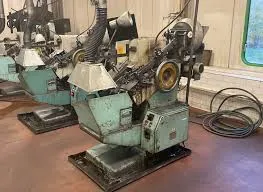
-
 Afrikaans
Afrikaans -
 Albanian
Albanian -
 Amharic
Amharic -
 Arabic
Arabic -
 Armenian
Armenian -
 Azerbaijani
Azerbaijani -
 Basque
Basque -
 Belarusian
Belarusian -
 Bengali
Bengali -
 Bosnian
Bosnian -
 Bulgarian
Bulgarian -
 Catalan
Catalan -
 Cebuano
Cebuano -
 Corsican
Corsican -
 Croatian
Croatian -
 Czech
Czech -
 Danish
Danish -
 Dutch
Dutch -
 English
English -
 Esperanto
Esperanto -
 Estonian
Estonian -
 Finnish
Finnish -
 French
French -
 Frisian
Frisian -
 Galician
Galician -
 Georgian
Georgian -
 German
German -
 Greek
Greek -
 Gujarati
Gujarati -
 Haitian Creole
Haitian Creole -
 hausa
hausa -
 hawaiian
hawaiian -
 Hebrew
Hebrew -
 Hindi
Hindi -
 Miao
Miao -
 Hungarian
Hungarian -
 Icelandic
Icelandic -
 igbo
igbo -
 Indonesian
Indonesian -
 irish
irish -
 Italian
Italian -
 Japanese
Japanese -
 Javanese
Javanese -
 Kannada
Kannada -
 kazakh
kazakh -
 Khmer
Khmer -
 Rwandese
Rwandese -
 Korean
Korean -
 Kurdish
Kurdish -
 Kyrgyz
Kyrgyz -
 Lao
Lao -
 Latin
Latin -
 Latvian
Latvian -
 Lithuanian
Lithuanian -
 Luxembourgish
Luxembourgish -
 Macedonian
Macedonian -
 Malgashi
Malgashi -
 Malay
Malay -
 Malayalam
Malayalam -
 Maltese
Maltese -
 Maori
Maori -
 Marathi
Marathi -
 Mongolian
Mongolian -
 Myanmar
Myanmar -
 Nepali
Nepali -
 Norwegian
Norwegian -
 Norwegian
Norwegian -
 Occitan
Occitan -
 Pashto
Pashto -
 Persian
Persian -
 Polish
Polish -
 Portuguese
Portuguese -
 Punjabi
Punjabi -
 Romanian
Romanian -
 Russian
Russian -
 Samoan
Samoan -
 Scottish Gaelic
Scottish Gaelic -
 Serbian
Serbian -
 Sesotho
Sesotho -
 Shona
Shona -
 Sindhi
Sindhi -
 Sinhala
Sinhala -
 Slovak
Slovak -
 Slovenian
Slovenian -
 Somali
Somali -
 Spanish
Spanish -
 Sundanese
Sundanese -
 Swahili
Swahili -
 Swedish
Swedish -
 Tagalog
Tagalog -
 Tajik
Tajik -
 Tamil
Tamil -
 Tatar
Tatar -
 Telugu
Telugu -
 Thai
Thai -
 Turkish
Turkish -
 Turkmen
Turkmen -
 Ukrainian
Ukrainian -
 Urdu
Urdu -
 Uighur
Uighur -
 Uzbek
Uzbek -
 Vietnamese
Vietnamese -
 Welsh
Welsh -
 Bantu
Bantu -
 Yiddish
Yiddish -
 Yoruba
Yoruba -
 Zulu
Zulu
Understanding the Functionality of OEM Thread Rolling Machines in Industrial Applications
The Working Principle of an OEM Thread Rolling Machine
In the realm of manufacturing, precision and efficiency are paramount. Among the many machines that facilitate this, the OEM (Original Equipment Manufacturer) thread rolling machine stands out due to its unique capabilities in creating high-quality threads. This article delves into the working principle of thread rolling machines, outlining their operational processes, advantages, and applications.
What is a Thread Rolling Machine?
A thread rolling machine is a specialized piece of equipment used to form threads on cylindrical materials without cutting. This process, known as cold forming, involves deforming the material to achieve the desired thread shape and size. OEM thread rolling machines are tailored for specific client requirements, ensuring that the produced threads meet exact specifications, enhances operational efficiency, and reduces production costs.
How Does a Thread Rolling Machine Work?
The operation of a thread rolling machine can be broken down into several key steps
1. Material Preparation The process begins with the selection of the appropriate material, which is typically a metal rod or blank. The material must possess sufficient ductility to allow for the deformation required during thread formation.
2. Machine Setup The operator sets up the machine by selecting the appropriate rolling dies according to the desired thread profile. These dies are usually designed with specific thread standards, such as UN, Metric, or custom profiles, ensuring that the threads produced are uniform and precise.
3. Feeding the Material Once the setup is complete, the raw material is positioned into the machine. The thread rolling process can be done in one or two operations, depending on the design of the rolling dies. The material is fed between two or three rolling dies, which are positioned in a way that they engage the material evenly.
oem thread rolling machine working

4. Rolling Process As the machine operates, either rotary or linear motion is applied to the dies, causing them to compress the material. The combination of pressure and movement causes the metal to flow and shape into the desired thread form. This operation warrants close control over factors such as speed, pressure, and the angle of contact to ensure optimal results.
5. Finishing and Inspection Once the threads are rolled, they undergo a finishing process which may include trimming excess material, cleaning, and surface treatments. Additionally, each batch of threaded products is inspected to guarantee adherence to specified tolerances and quality standards.
Advantages of Thread Rolling Machines
One of the primary benefits of using an OEM thread rolling machine is the enhanced strength of the finished threads. Since the process involves cold working, the threads formed are denser and exhibit better mechanical properties compared to those made by cutting methods. Furthermore, thread rolling is a highly efficient process, enabling the mass production of threaded components with minimal waste and lower energy consumption.
Additionally, thread rolling machines provide versatility in terms of the types of threads that can be produced. From fine to coarse threads, and everything in between, OEM thread rolling machines can be customized to accommodate a wide range of applications across industries, including automotive, aerospace, and construction.
Applications
OEM thread rolling machines are utilized extensively in various sectors. In the automotive industry, they produce bolts, screws, and fasteners essential for assembling vehicles. The aerospace sector relies on these machines to create components that must withstand extreme conditions. Moreover, thread rolling technology is crucial in manufacturing equipment that services construction, electronics, and medical devices.
Conclusion
In conclusion, OEM thread rolling machines play a vital role in modern manufacturing, delivering precision and efficiency in thread production. Their ability to create strong and durable threads through a cost-effective process highlights their significance across numerous industries. As manufacturing processes continue to evolve, thread rolling technology will undoubtedly remain a cornerstone in the quest for improved quality and productivity.
